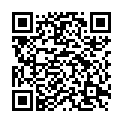|
|
|
| Module code: KI860 |
|
1V+1P (2 hours per week) |
|
3 |
| Semester: 2 |
| Mandatory course: no |
Language of instruction:
German |
Assessment:
180-minute written exam
[updated 02.07.2007]
|
KI860 Computer Science and Communication Systems, Master, ASPO 01.04.2016
, semester 2, optional course
|
30 class hours (= 22.5 clock hours) over a 15-week period.
The total student study time is 90 hours (equivalent to 3 ECTS credits).
There are therefore 67.5 hours available for class preparation and follow-up work and exam preparation.
|
Recommended prerequisites (modules):
None.
|
Recommended as prerequisite for:
|
Module coordinator:
Prof. Dr. Horst Wieker |
Lecturer:
Prof. Dr. Horst Wieker
[updated 01.04.2003]
|
Learning outcomes:
The rapid growth and merging of modern communications networks brings with it the need to manage individual network elements as well as the overall network. A system is required that can cover all areas, ranging from customer requirements and technical implementation to network operations at all levels.
Students will become acquainted with the typical problems of managing today’s networks. After completing this course they will be able to analyse the architecture of both software-based and hardware-based systems, plan a management system using new, advanced communication interfaces and test its functionality.
[updated 02.07.2007]
|
Module content:
1. Standardization
2. Identifying and defining problems
3. Functional architecture used in TMN
4. The physical architecture of TMN
5. Theoretical considerations of applications in the GSM and fixed networks
6. Development of TMN systems
7. Databases
8. Interfaces and protocols
-------------------------------------------------
Practical exercise: Working on a real SDH network
[updated 02.07.2007]
|
Recommended or required reading:
SIEMENS: Systems documentation
MICROSOFT: SQL Database
[updated 02.07.2007]
|


